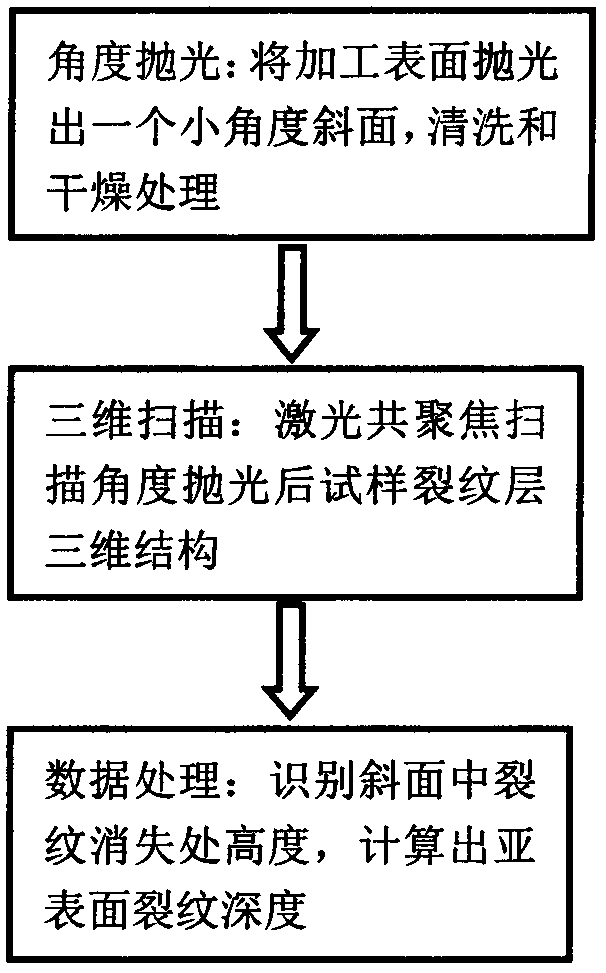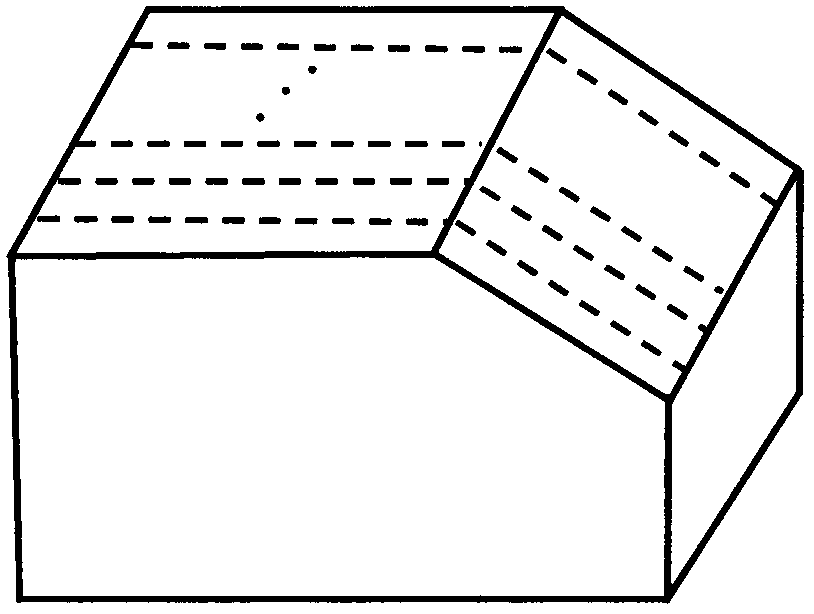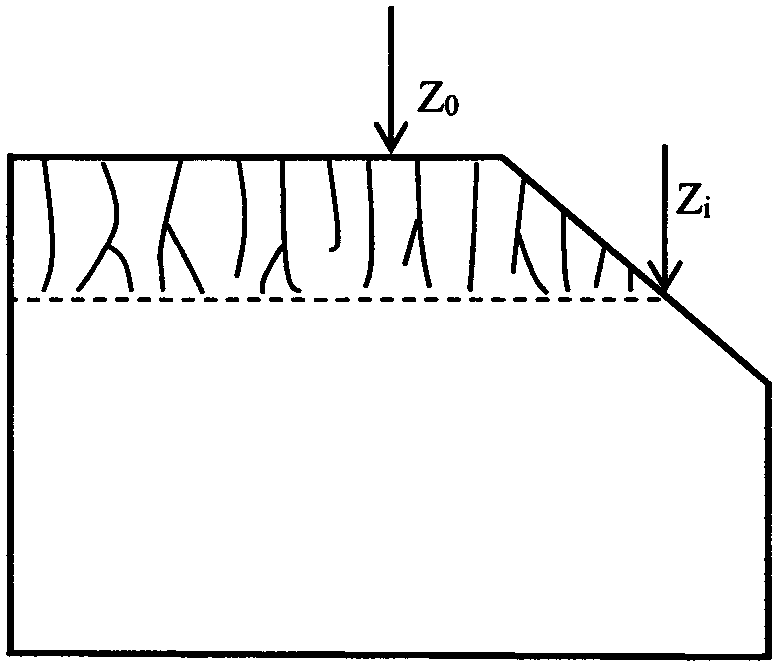Method for detecting depth of subsurface crack of optical material
A technology of optical materials and detection methods, applied in the direction of optical testing flaws/defects, preparation of test samples, etc., to achieve the effect of improving detection efficiency
- Summary
- Abstract
- Description
- Claims
- Application Information
AI Technical Summary
Problems solved by technology
Method used
Image
Examples
Embodiment 1
[0023] The subsurface crack depth detection method of K9 glass after abrasive grain processing, the detection process of this method is as follows figure 1 shown, including the following steps:
[0024] (1) Angle polishing: Bond the K9 glass sample to be tested on the angle polishing fixture, put it into a biaxial polishing machine, and use diamond micropowder with a particle size of W1 and cerium oxide polishing solution with a particle size of 0.5 μm for grinding. and polishing, the design angle of the angle polishing fixture is 6°; after grinding and polishing, the sample is etched in 1% HF solution for 5 minutes, taken out for ultrasonic cleaning, and then put into a vacuum drying oven for drying;
[0025] (2) Three-dimensional scanning: Olympus OLS4500 laser confocal microscope (Z-direction resolution 10nm) was used to perform three-dimensional tomographic scanning on the sample after angle polishing to obtain the three-dimensional structure of the crack layer;
[0026] ...
Embodiment 2
[0029] The subsurface crack depth detection method of the Si wafer after abrasive grain processing, the detection process of this method is as follows figure 1 shown, including the following steps:
[0030] (1) Angle polishing: the Si wafer sample to be measured is bonded on an angle polishing fixture, put into a biaxial lapping machine for grinding and chemical mechanical polishing, and the design angle of the angle polishing fixture is 6°; grinding and polishing Finally, put the sample into the "Young's" solution to etch for 30s, take it out for ultrasonic cleaning, and then put it in a vacuum drying oven to dry;
[0031] (2) Three-dimensional scanning: Olympus OLS4500 laser confocal microscope (Z-direction resolution 10nm) was used to perform three-dimensional tomographic scanning on the sample after angle polishing to obtain the three-dimensional structure of the crack layer;
[0032] (3) Data processing: Since the measured object is a non-transparent material, the three-...
PUM
| Property | Measurement | Unit |
|---|---|---|
| particle diameter | aaaaa | aaaaa |
Abstract
Description
Claims
Application Information
 Login to View More
Login to View More - R&D
- Intellectual Property
- Life Sciences
- Materials
- Tech Scout
- Unparalleled Data Quality
- Higher Quality Content
- 60% Fewer Hallucinations
Browse by: Latest US Patents, China's latest patents, Technical Efficacy Thesaurus, Application Domain, Technology Topic, Popular Technical Reports.
© 2025 PatSnap. All rights reserved.Legal|Privacy policy|Modern Slavery Act Transparency Statement|Sitemap|About US| Contact US: help@patsnap.com



